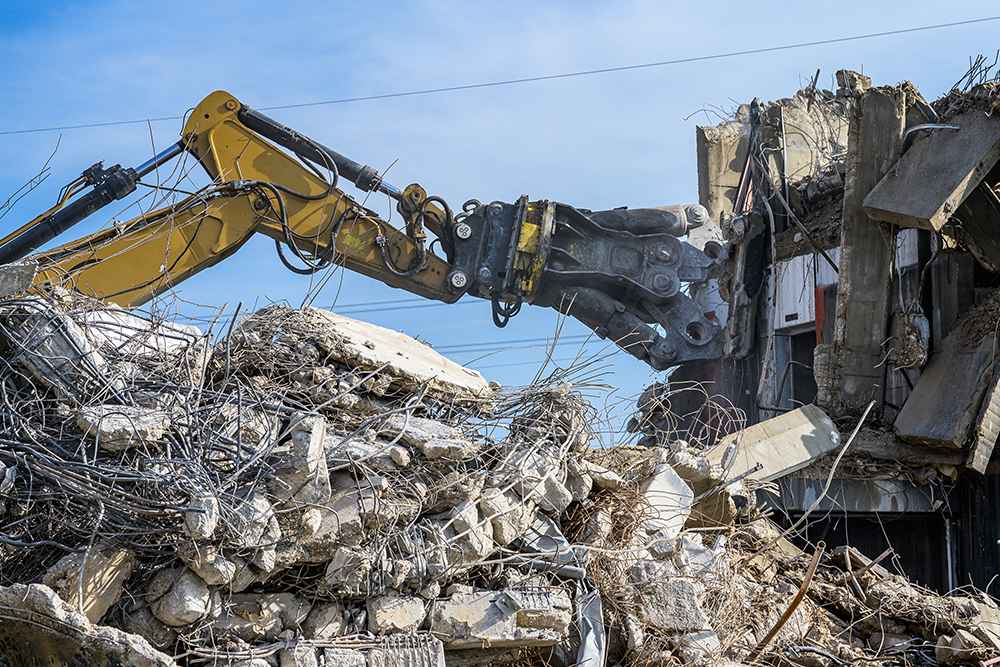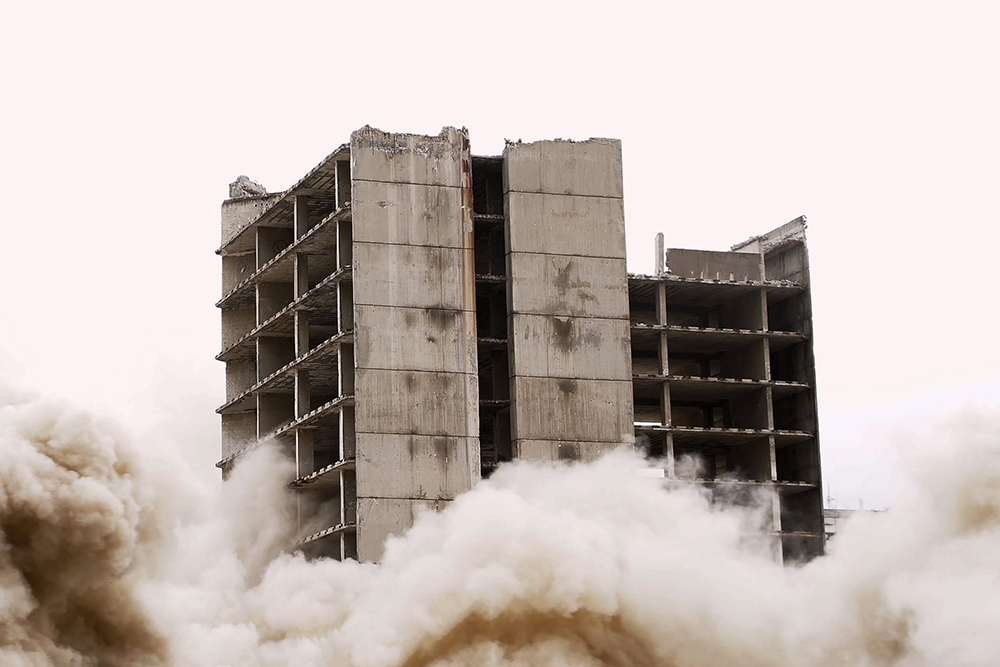Breaking Down The 4 Methods Of Building Demolition

Building demolition is a complex process that involves safely dismantling or destroying a structure to clear land for new development or remove unsafe buildings. Each demolition method is tailored to the structure’s size, materials, and location, as well as environmental and safety considerations.
Understanding Building Demolition
Demolition projects range from small structures to towering high-rises, each requiring a different approach based on structural materials, location constraints, and environmental impact. For instance, an isolated warehouse may be demolished using explosive methods, while structures in densely populated areas require controlled dismantling to prevent damage to neighboring buildings. The demolition process often begins with a thorough assessment, planning, and safety checks to ensure a controlled and safe process.
The primary methods of building demolition can be categorized based on the tools, techniques, and specific purposes for which they are best suited. Here are the key methods commonly used in building demolition.
- Implosion
Implosion is a precise demolition technique that employs strategically positioned explosives to bring down a structure in a controlled, inward collapse. This method is typically reserved for large buildings such as high-rises and industrial chimneys, where maintaining safety and accuracy is essential. The placement and timing of the explosives are carefully calculated to ensure the building collapses inward, minimizing impact on surrounding areas and containing debris within a designated perimeter.
Implosion requires meticulous planning and coordination, as well as collaboration with demolition engineers and explosive experts to ensure success. When executed correctly, implosion can clear a large structure in seconds, though site preparation and safety checks often take weeks.
- Mechanical Demolition
Mechanical demolition is one of the most commonly used methods for building demolition, utilizing heavy machinery such as excavators, bulldozers, and wrecking balls to dismantle a structure. This approach is versatile and can be used for buildings of varying sizes, from small residential homes to larger industrial facilities.
In mechanical demolition, equipment operators break down the structure piece by piece, which allows for control and precision, especially when working in confined spaces. Wrecking balls, for example, are ideal for masonry structures, while excavators and bulldozers handle steel and concrete buildings.
- Selective Demolition (Dismantling or Deconstruction)
Selective demolition, also known as dismantling or deconstruction, involves manually taking apart a building piece by piece. This method is labor-intensive but is often used when materials need to be salvaged for reuse or recycling. Selective demolition is ideal for structures containing valuable materials, such as historical buildings with architectural features that need preservation or commercial buildings where equipment and interiors are reusable.
This technique requires skilled workers who carefully remove each component without damaging surrounding materials. While time-consuming, selective demolition is the most environmentally friendly option, as it allows for the recovery and repurposing of materials, minimizing waste.
- High Reach Arm Demolition
High reach arm demolition is a method that involves using an excavator with an extended arm to demolish tall structures from the top down. This approach is suitable for mid-rise buildings, typically between 20-30 meters in height, and is an alternative to implosion when working in dense urban settings.
The high reach arm can precisely break apart materials such as concrete and steel at greater heights, gradually lowering the building level by level. This method reduces the risk of debris spreading and offers better control over the demolition process, making it ideal for projects where safety is a primary concern. High reach arm demolition also allows for separation of materials on-site, aiding in sustainable disposal or recycling efforts.
Environmental and Safety Considerations in Building Demolition
Each demolition method involves planning to address environmental and safety concerns. For instance, implosion generates a significant amount of dust, requiring air quality controls to protect surrounding areas. Similarly, mechanical and high reach arm demolition methods produce substantial debris that needs careful management to avoid hazards. At Coleman Environmental Engineering, LLC, we implement remedial construction techniques and stringent safety protocols to ensure that every demolition project meets industry standards for health, safety, and environmental protection.
A crucial aspect of building demolition is debris management, as these materials must be sorted, recycled, or safely disposed of to reduce landfill impact. When possible, materials like concrete, steel, and brick are separated for recycling, minimizing waste and contributing to sustainable practices. Safety measures also include protective barriers, noise control, and close monitoring of air quality to ensure the well-being of nearby residents and workers.
Choosing the Right Demolition Method
The choice of demolition method depends on factors like the building’s height, location, materials, and surrounding environment. Implosion and high reach arm demolition are ideal for high-rise structures, while mechanical and selective demolition are better suited for smaller buildings or projects with unique environmental or preservation requirements. Selecting the appropriate method ensures that the project is completed safely, efficiently, and with minimal environmental impact.
At Coleman Environmental Engineering, LLC, we approach each demolition project with careful planning and a focus on sustainability, balancing safety with environmental responsibility.

